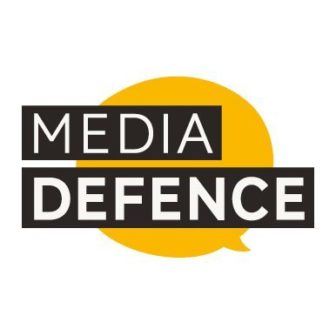Threats to press freedom and democracy do not just come from tyrants and totalitarian states — they also come from elected demagogues, noted Kunda Dixit, a publisher based in Nepal, as he moderated a panel session on Fighting Back Against SLAPPs and Other Legal Threats at the 13th Global Investigative Journalism Conference (#GIJC23) in Sweden.
“[Elected officials] do not have to kill or drive journalists into exile anymore. They just have to file lawsuits against the journalist.” — Nepalese publisher Kunda DixitDixit, who has himself been the target of a SLAPP — Strategic Lawsuits Against Public Participation — case, was joined by Alexander Papachristou, executive director of the Cyrus R. Vance Center for International Justice; Carlos Galo, chief executive officer at Media Defence, which provides legal help to journalists; and Bea Bodrogi, a Hungary-based human rights lawyer who has worked on multiple SLAPP cases.
SLAPPs are a legal instrument used by powerful and influential people or entities to muzzle their critics from publishing materials considered critical. The main aim of a SLAPP is to bully, harass, or intimidate journalists and activists into silence, Bodrogi explained.
In 2017, Maltese investigative journalist Daphne Caruana Galizia was murdered by an explosive device hidden beneath her car seat, which detonated outside of her house in Bidnija, Malta. Caruana faced 48 libel cases before her death, and her family inherited some of them — underscoring how dangerous SLAPPs can be for journalists, Bodrogi said.
“Nowhere is safe anymore,” Dixit added. “[Elected officials] do not have to kill or drive journalists into exile anymore. They just have to file lawsuits against the journalist. If they cannot do it in the country the journalist is from, they just have to find a libel lawsuit to sue them in another jurisdiction.”
How Journalists Can Identify SLAPP Suits
Bodrogi works with more than 100 journalists dealing with SLAPP cases, and shared some of the signs to help journalists identify whether they have become a SLAPP target.
- It is a SLAPP case if the legal action was brought by a private party. Journalists should note that even government officials can act in their private capacity, so their focus should not only be on private entities.
- SLAPP targets acts of public participation. People who file SLAPPs know that journalists, activists, and advocates carry out an important watchdog function through public participation, so they specifically target them and their actions or words in the public arena.
- If the lawsuit is brought with the purpose of silencing, shutting down, or discouraging acts of public participation, it is a SLAPP. SLAPPs target individuals rather than just organizations.
- When the argument presented is baseless — both legally and factually.
- If the aim of the plaintiff is not necessarily to win the case but to hobble the journalist (financially or otherwise) or distract them from their work.
Organizations Helping Journalists Fight SLAPP Cases
In most cases, freelance journalists and small media organizations cannot defend themselves against these lawsuits. There is a need for systems that can help journalists and advocates deal with SLAPP cases without having to abandon their reporting assessments. What “SLAPPers” aim to do is occupy journalists’ time with court cases — taking them away from doing their job.
EU institutions are actively discussing the possibilities of providing recommendations, training, and free legal aid to journalists and activists being targeted by SLAPP suits. This opportunity is not available to journalists in many countries, but there are some organizations taking up these responsibilities.
Reporters Shield is a US-based nonprofit — developed by investigative journalists at the OCCRP and lawyers at the Cyrus R. Vance Center for International Justice — that defends investigative reporters around the world from legal threats. The program registers organizations or outlets, for a fee, to become members, through which they then have access to legal consultation and representation. (The eligibility criteria for organizations — such as, that they have to be engaged in public interest or investigative reporting in print and online media — is outlined here.) Reporters Shield has about $500,000 in aid that is used to provide legal services to their members.
“What the Reporter’s Shield doesn’t do is pay if you lose,” Papachristou warned. “So if the court rules against you, fairly or unfairly, the cost is on you — but the expense of defending you is covered.” According to Papachristou, Reporters Shield has raised $13 million of its $20 million target from the US government through USAID and other donors. The program is in the first phase and is operating in North America and Europe, and will move to Sub-Saharan Africa and Australia in the second and third phases, respectively.
Media Defence provides grants to journalists who get sued for their work or links them with lawyers who are able to give them adequate legal support. “We have an in-house legal team of excellent lawyers who oversee this work and represent clients before International courts,” said its CEO, Carlos Galo, adding that Media Defence supports cases in 23 countries in all regions of the world. In 2022, Media Defence supported 188 cases, 40% of which were SLAPPs — a number that reflects the rise in SLAPP suits globally.
“We are trying to fight back, and we seek accountability for journalists who have been victims of human rights violations or who have been convicted in SLAPP cases,” said Galo, stressing that Media Defence is trying to address those issues by pursuing cases before regional courts or before the UN treaty bodies too.
Watch the full GIJC23 panel video on Fighting Back Against SLAPPs and Other Legal Threats.

 5 months ago
33
5 months ago
33


